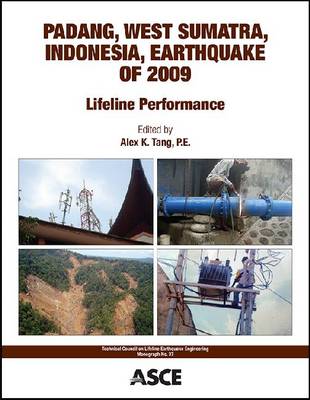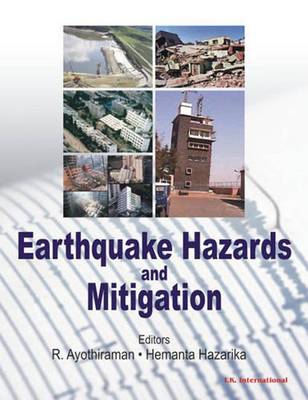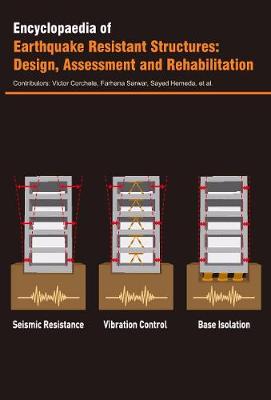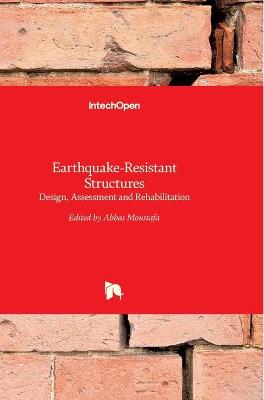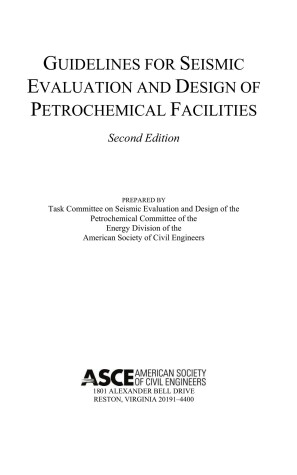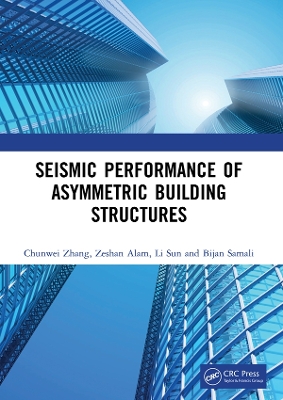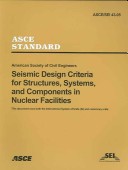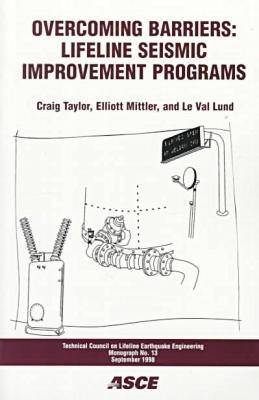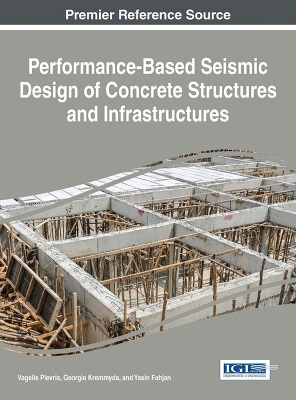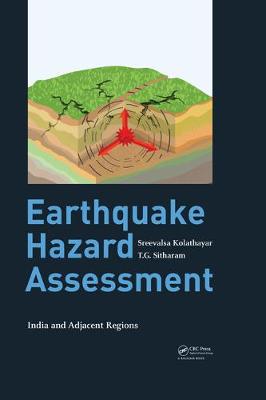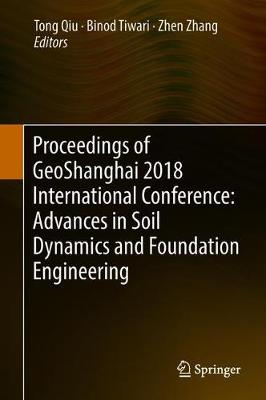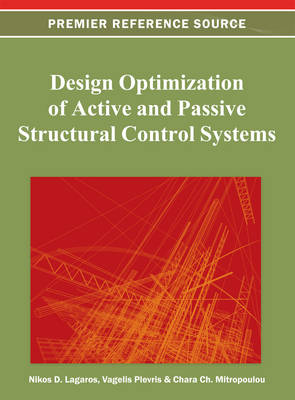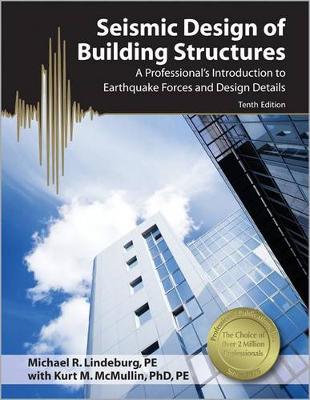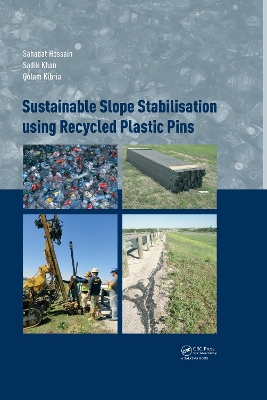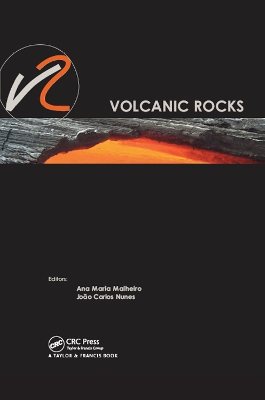Sponsored by the Technical Council on Lifeline Earthquake Engineering of ASCE. On September 30, 2009, an earthquake with a moment magnitude of 7.6 occurred off the west coast of Sumatra in Indonesia, followed 22 minutes later by an aftershock with a magnitude of 6.2. The epicenter was located about 50 kilometers southwest of Padang, a city in the province of West Sumatra with a population of 900,000. The earthquake and aftershock caused extensive damage in Padang and 85 percent of residential b...
The international workshop on "Earthquake Hazards and Mitigation" was held in Guwahati, India during 7-8 December 2007. This proceedings contains 5 keynote lectures, 11 invited lectures and 44 contributed papers presented in the workshop under the following broad themes:1.Engineering Seismology and Seismic Hazard2.Earthquake Geotechnical Engineering3.Structural Earthquake Engineering4.other related issues This book reflects the present state-of-the-art of estimation of various earthquake hazard...
An earthquake is a powerful surface acoustic wave (SAW) generated by a seismic event, such as a volcano or motion of the Earth's layers, that propagates on the Earth's surface. This book explains the design of earthquake resistant structures using SAW techniques that offer a variety of experimental setups and theoretical models. Designs of protecting systems able to dissipate or deflect SSW energy built around buildings or towns located in earthquake regions set this book apart from other seismo...
Earthquake Resistant Construction and Design
Contains the proceedings of ERCAD the international conference held in Berlin, June 1989. Some 70 presentations discuss geotechnical earthquake engineering, construction and design of structures in seismic regions, projects in developing countries, and seismic risk in the Mediterranean region. Resul
Encyclopaedia of Earthquake Resistant Structures: Design, Assessment and Rehabilitation
Guidelines for Seismic Evaluation and Design of Petrochemical Facilities
by Task Committee on Seismic Evaluation and Design
Prepared by the Task Committee on Seismic Evaluation and Design of the Petrochemical Committee of the Energy Division of ASCE This report offers practical recommendations regarding the design and safety of petrochemical facilities during and following an earthquake. For new facilities, the recommendations focus on interpreting of the intent of building codes as applied to petrochemical facilities; the report also gives practical guidance on design details and considerations that are not included...
Seismic Performance of Asymmetric Building Structures
by Chunwei Zhang, Zeshan Alam, Li Sun, and Bijan Samali
Seismic Performance of Asymmetric Building Structures presents detailed investigations on the effective assessment of structural seismic response under excessive torsional vibrations, demonstrating behavioural aspects from local response perspective to global seismic demands. The work provides comprehensive analytical, computational, experimental investigations, and proposes improved design guidelines that structural engineers can utilize to enhance the seismic design of asymmetric building stru...
Seismic Design Criteria for Structures, Systems and Componenets in Nuclear Facilities, ASCE/SEI 43-05
by Bob Murray
ASCE/SEI 43-05 provides stringent design criteria for nuclear facilities. Due to the potential risk associated with nuclear hazards, it is desirable that nuclear facilities have a lower probability that structural damage will be caused by earthquake than do conventional facilities. The goal of this Standard is to ensure that nuclear facilities can withstand the effects of earthquake ground shaking with desired performance. This Standard will be of use to any designers or analysts involved in the...
Evaluation Findings for Enidine, Inc. Viscous Damper (Technical evaluation report)
by Highway Innovative Technology Evaluation
The Highway Innovative Technology Evaluation Center (HITEC) serves as a clearinghouse for implementing highway innovation by providing nationally-focused, collaborative evaluations of new products and technologies. This report, ""Evaluation Findings for Enidine, Inc. Viscous Damper"", presents the results of a detailed evaluation for one technology out of eleven that were evaluated in this program. The evaluations were designed to test the performance of seismic isolators and dampers produced by...
In spite of often repeated barriers to natural hazards risk reduction, the seven large lifeline organizations evaluated in this monograph have undertaken significant seismic improvement programs. Our study of these organizations demonstrates the variety of ways in which these organizations have started and sustained these programs. Educated by past earthquakes damaging their system or similar systems, and by past research and educational programs, top-level managers, and their trusted high-level...
Solid design and craftsmanship are a necessity for structures and infrastructures that must stand up to natural disasters on a regular basis. Continuous research developments in the engineering field are imperative for sustaining buildings against the threat of earthquakes and other natural disasters. Performance-Based Seismic Design of Concrete Structures and Infrastructures is an informative reference source on all the latest trends and emerging data associated with structural design. Highli...
This book represents a significant contribution to the area of earthquake data processing and to the development of region-specific magnitude correlations to create an up-to-date homogeneous earthquake catalogue that is uniform in magnitude scale. The book discusses seismicity analysis and estimation of seismicity parameters of a region at both finer and broader levels using different methodologies. The delineation and characterization of regional seismic source zones which requires reasonable o...
This book is the sixth volume of the proceedings of the 4th GeoShanghai International Conference that was held on May 27 - 30, 2018. This volume, entitled "Advances in Soil Dynamics and Foundation Engineering", covers the recent advances and technologies in soil dynamics and foundation engineering. These papers are grouped into four categories: (1) soil dynamics and earthquake engineering, (2) deep excavations and retaining structures, (3) shafts and deep foundations, and (4) offshore geotechnic...
Computational Structural Dynamics and Earthquake Engineering
by Manolis Papadrakakis
Design Optimization of Active and Passive Structural Control Systems
Design Optimization of Active and Passive Structural Control Systems includes Earthquake Engineering and Tuned Mass Damper research topics into a volume taking advantage of the connecting link between them, which is optimization. This is a publication addressing the design optimization of active and passive control systems. This title is perfect for engineers, professionals, professors, and students alike, providing cutting edge research and applications.
Seismic Design of Reinforced Concrete Structures for Controlled Inelastic Response
This detailed guide will enable the reader to understand the relative importance of the numerous parameters involved in seismic design and the relationships between them, as well as the motivations behind the choices adopted by the codes. For a structure to remain elastic under its design seismic action, typically associated with a 10 per cent exceedance probability in 50 years, it has to be designed for lateral forces with magnitude in the order of 50 per cent or more of its weight.
Seismic Design of Building Structures (Engineering Review Manual) (Engineering Reference Manual)
by Michael R Lindeburg and Kurt M McMullin
Handbook of Research on Seismic Assessment and Rehabilitation of Historic Structures, Vol 1
by Panagiotis G Asteris
Guide to Post-Earthquake Investigation of Lifelines (Technical Council on Lifeline Earthquake Engineering Monogra, #11)
Sustainable Slope Stabilisation using Recycled Plastic Pins
by Sahadat Hossain, Sadik Khan, and Golam Kibria
Landslides and slope failure are common in the US and rest of the world. The landslides cause significant damage to infrastructure and millions of dollars are required each year to fix the slope. A sustainable and costeffective option to stabilise the slope can have significant benefits, as it will reduce the cost of maintenance and when using recycled pins, it may help the environment at the same time. The recycled plastic pin is made from recycled plastic bottles and other plastic waste. Sever...
Volcanic Rocks
Environmental issues are high on the public agenda and engineering projects need to take environmental concerns on board. Volcanic Rocks, contains papers from the ISRM Workshop W2 (Ponta Delgada, Azores, Portugal 14-15 July 2007), and focuses specifically on problems associated with construction activities in areas of volcanic rock. The book highlights novel approaches and solutions to engineering problems in volcanic areas, covering a variety of topical themes, which include: characterization o...
